The history of the Scottish Straight cat breed, a description of the standard of appearance, the temperament of the pet, the health of the animal, recommendations for care, the price of a pedigree kitten. Scottish Straight (Scottish Straight) or Scottish straight cat is a representative of the feline world, which appeared on our planet thanks to the works of breeders and experts in genetics. Working on the breeding of cats with unusually bent ears, as a result, felinologists also received fold-eared seals - folds and purrs with ordinary straight ears. Many may be interested in the question: "What is the difference between Scottish Fold and Scottish Straight?" - Yes, practically nothing, except for the anatomical structure of the auricles. In the process of work, scientists came to a common conclusion - these breeds cannot exist separately from each other, since if you breed straight cats with each other or also lop-eared, then such an alliance is fraught with many genetic pathologies in future offspring.
The history of the origin of the Scottish Straight cat
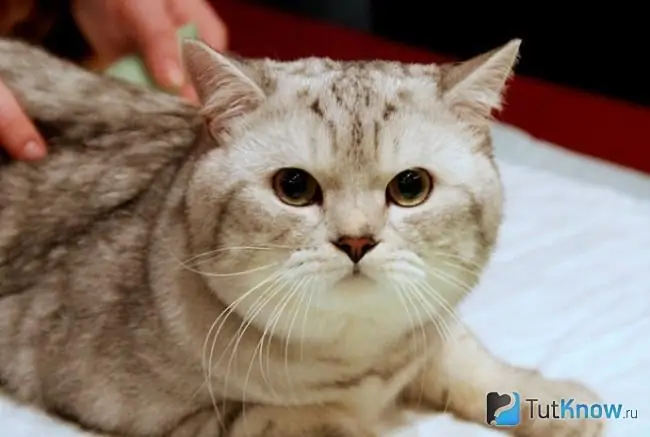
According to scientific data, the history of the birth of these cute pets is closely related to the breeding of stotish folds. The thing is that a snow-white cat appeared in one of the small towns of Scotland, which was named Susie. Susie had a distinct feature - her ears bent forward. The owners were not at a loss for a second and showed such an extraordinary pet to local breeders, and they, in turn, decided to keep this feature.
A program to develop a new breed has started. At first, these animals began to be compared with rabbits, so no one bothered about the name of the new variety of cats, calling them lop-eared. Soon, when the population of purr with an unusual structure of the auricle began to increase, they decided to name the seals, somehow especially and more sonorously, and a new breed was created - the Scottish Fold.
As soon as the lop-eared babies reached puberty, it became clear to felinologists that in no case should these animals be crossed with each other. Their kittens are born with many genetic anomalies of development, most often this is an underdevelopment of the bone skeleton. This was manifested by the fact that the bones of the cat fully grew in width, but in length they remained the original size. Such babies most often did not live for several weeks, and sometimes even days.
Due to such a bitter experience, Scottish Fold cats began to be crossed with cats very similar to them, only with erect ears. As a result, kittens were born with straight ears and hanging ones. So for almost half a century, representatives of felines with the most common auditory organs served only to continue the genus of the Fold Scots.
But Russian felinologists thought that it is unfair to push these murziks to another plane, they are quite healthy animals, which in appearance and temperament fully correspond to the official breed standard. Well, just think, their ears are not like that, but they deserve to be thoroughbred and in demand. So Russian cat lovers still achieved official recognition of a new, separate breed, which they called the Scottish Straight. Such an event took place in 2005, since then Scottish Straights have every right to take part in a wide variety of exhibitions and feline championships.
Description of the standard and features of the breed of cats Scottish Straight
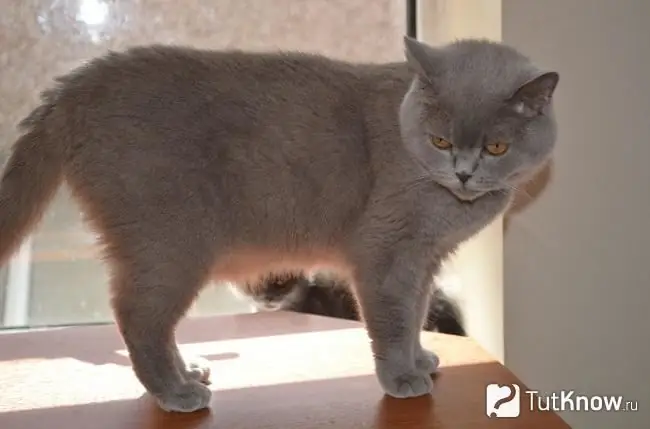
- The torso. At first glance, you can confuse these British people with a small plush toy, they are really so soft, delicate that it seems that you have a funny craft in front of you. But in fact, these are animals that have, although not oversized, but rather strong, muscular body, a powerful bone skeleton. In diameter, the thighs and shoulders are approximately the same, located on the same line. All body contours of the Scottish Straight are soft and flowing, no sharp lines, protruding shoulder blades or iliac bones. In individuals of the Scottish Straight breed, sexual dimorphism is very pronounced, representatives of the stronger sex are much larger and heavier than cats. The average body weight of an adult male ranges from 3.5 to 5 kg.
- Limbs Scottish Straight cats are small in comparison with the general parameters of the body, but in the aggregate it looks quite cute and harmonious. The legs of the Scots are quite thick, stable and very strong, we can say that these cats "stand confidently on their feet." The paw pads are very large, with the shape of an oval, the fingers are compressed.
- Tail process average in duration, according to the breed standard, the length of the balance organ should be equal to the distance from the base of the tail to the midpoint of the shoulder blades, and neither more nor less. The base of the caudal process in the Scottish Straight is rather wide, but towards the slightly tapered tip, it decreases significantly in diameter.
- Head of cats Scottish Straight is located on a short, but very thick neck. The configuration of the skull is rounded, slightly convex, the muzzle is wide. The chin and cheekbones are powerful and strong, but very well hidden behind large, chubby cheeks. The nose is moderately wide, short, which gives the animal's muzzle a special cuteness. The profile is almost straight, only a slight notch can be seen at the base of the spout.
- Auricles - This is perhaps the most popular body part of Scottish cats. They are not at all large in size, most often medium, or even small. They are located high on the crown of the head, at an impressive distance from each other, which is what locators resemble. Although these cats are called straight-eared, this is only due to the fact that their ears are not curled, like in folds, but all the same, the front side of the auditory organ is slightly lowered, but they do not reach the fold. The auricles are wide, gradually tapering to a rounded tip.
- Eyes Scottish Straight cats are very large and round, like buttons. Accordingly, the cat's gaze is very deep and piercing. Sometimes it seems that the animal is constantly surprised or frightened by something. As for the colors of the iris, they can be of a wide variety of colors, the main thing is that this color scheme matches the basic tone of the coat color and that the shade of the iris is rich and pure.
- Wool Scottish Straight cats are very beautiful, the texture resembles a plush, so stroking such a pet is a pleasure. Their fur coat is very thick, silky, in addition to this little body of the purr, it is tightly wrapped in an additional, abundant layer of undercoat. As for the length of the hairs, they can be either long or short. The long-haired representatives of this cat species should have a noticeable collar, the plume on the tail, and the fur on the muzzle and limbs should be much shorter than on the rest of the body.
- Color stottish straight is truly a riot of colors. The official breed standard allows, as monochromatic colors, often black, chocolate, blue with silver overflow, caramel, red and white kittens. Also, these animals can be painted in a tricolor, tortoiseshell color. Very popular pets, covered with a marble-colored fur coat, popularly called the "whiskas" color, and all thanks to the cat from the advertisement for the food of the same name.
There are also cats with a lilac color of wool, but this phenomenon is very infrequent, respectively, the price of such a kitten will be many times higher.
Features of the character of the cat Scottish Straight
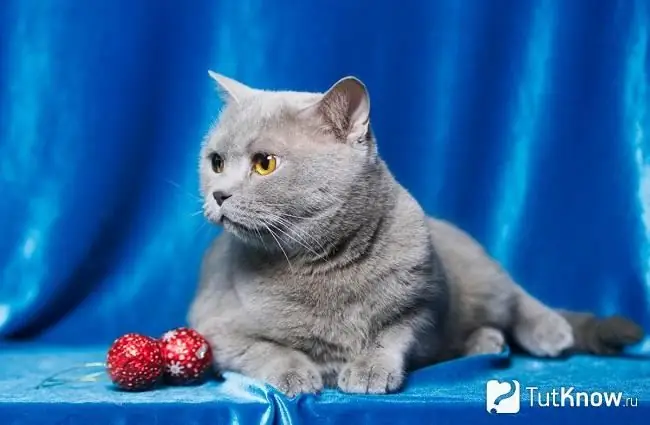
The cute, attractive appearance of Scottish straight cats fully corresponds to the picture of their inner world, it is impossible not to love such a pet, there is nothing to be angry or offended at. They are very open, friendly, intelligent and intelligent, while being the same with everyone who lives with them under the same roof and with the guests of the house.
These pets perfectly find a common language with young children, although they may seem to be lugs according to external data, but this is not so, the purr will happily play, run and climb at various heights.
By virtue of its far-reaching intelligence, a Scottish straight-eared cat can easily be taught all the rules of behavior in the house, from using a tray and a scratching post, to the fact that it is impossible to climb on tables, in cabinets and in other areas that for some reason so attract representatives of felines. These pets tolerate adaptation to new living conditions quite well and does not last long.
What do Scottish Straights like? They love to spend time with their owners, they love both to play and to lie side by side on the couch, but what they cannot stand is forced hugs and squeezes. A cat is a proud and independent creature, and she herself must decide when she can be picked up, stroked and played with her, she cannot be forcibly forced to do so.
Such a pet tolerates loneliness quite well, he will find something to occupy himself with during your stay outside the house, and such activities will never be associated with damage to furniture and other pranks. But this does not mean that you can leave your pet alone for a long time, if your work is associated with frequent, even if short-lived, business trips, then it is strongly recommended to have another pet. It doesn't matter who it will be, another cat or a big dog, and with both the Scottish Straights will make friends and have fun.
Scottish Straight Cat Health
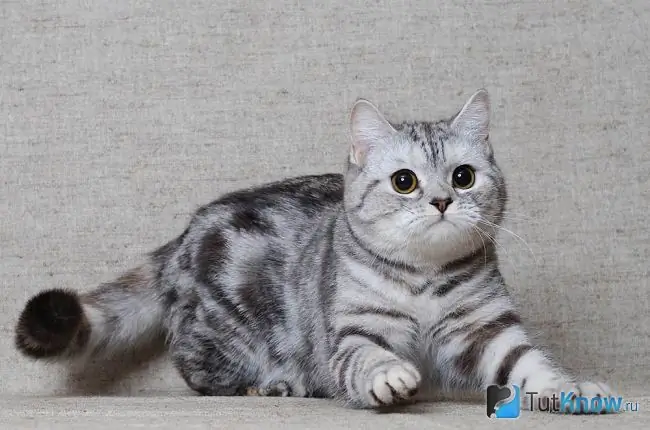
In general, Scottish Straights are healthy animals, with a fairly strong immunity, unlike their lop-eared counterparts, these purrs rarely exhibit any genetic or congenital pathologies.
However, you should not rely only on natural data, about once every six months, the pet needs to be shown to a veterinarian, for the purpose of a general examination and passing the necessary tests. In addition, one should never forget about parasites, both external and internal. Prevention of helminthiasis should be carried out regularly, before such courses, it is imperative to consult with a specialist to select the right drug and its optimal dosage.
If your Scottish Straight cat is often outdoors, then fleas and even ticks may well begin to take root in the thick of his plush coat. Accordingly, after each walk, it is advisable to examine the cat for external parasites. If any were found, it is also better to show the pet to the doctor to determine further actions to combat unwanted guests.
The teeth are not the strongest place of Scottish straight cats, but it is still better not to bring them to problems, for this it will be more than enough to clean the ears and wipe the soft tissues of the oral cavity of the pet, about twice a week. You can, of course, and even need to do this more often, but not less often.
How to care for a Scottish Stottish Straight cat?
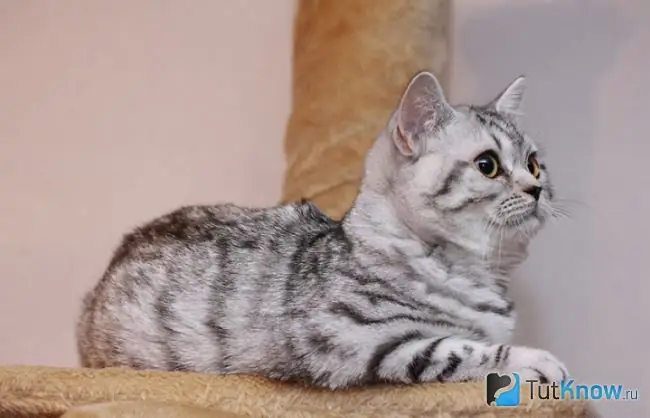
- Hair care. Although the coat of these pets is thick, it does not tend to get tangled up. Therefore, at normal times it will be enough to brush the kitten once a week. For this procedure, it is best to use a soft natural bristle brush. During the shedding period, combing is best done up to daily, you can also use a special rubber glove. These cats are very neat and tidy, so their fur coat is perfectly kept clean and tidy, but for this they often lick themselves. Accordingly, the animal swallows a large amount of wool, and this is already a problem. In order to prevent blockage of the gastrointestinal canal with a hairball, you need to feed the pet with a special paste for removing hair. It is also recommended to plant greens for Scottish Straight, it also helps to cleanse the stomach of hair. As for water procedures, this is optional. Experts recommend bathing as it gets dirty, or once a quarter, but since Scottish Straight cats do not belong to avid ones who do not like to wash, they can be bathed more often, but not more often than once a month. You need to wash the animal only with high-quality shampoo for cats, which contain only natural ingredients. If one is not at hand, you can use baby shampoo, just first dilute it with water in a 1: 1 ratio.
- Hygiene. Scottish Straight cats need to clean their auditory organs of earwax, dust particles and dead epidermis. This should be done about once a week using children's cotton swabs equipped with a stopper and a special lotion for cleaning the ears. Home remedies should not be used as your cat's sensitive skin may react negatively with allergies or inflammation. Pet teeth should be brushed with either a special soft toothbrush or a soft, clean, lint-free cloth. A piece of tissue should be wrapped around your index finger and blotted in paste or tooth powder to gently and thoroughly clean the Scottish Straight teeth from plaque. If this is not done, then the plaque will soon be transformed into tartar, and this is fraught with many negative consequences. It is also good to wipe the gums of the animal, in order to prevent periodontal disease and gingivitis.
- Eyes The Scottish Straight cat also needs to be wiped down weekly with cotton pads soaked in disinfectant solution. Scottish straight cats should not have any discharge from the eyes, only small brown crusts are permissible, which the cat independently removes. If they are delayed, or you notice even a slight swelling of the mucous membrane, this is already a reason to see a veterinarian.
- Claws can also be trimmed a little. Although these cats are not famous for grinding their claws on the sofa or wallpaper, if nature so demands, nothing can be done. To avoid such unpleasant incidents, pruning is recommended. This should be done using very sharp tweezers, since with a blunt instrument you simply risk splitting your pet's nail plate. And this can cause in the cat not only painful sensations, but also a painful shock, since a lot of nerve endings pass in the cat's claw. It must be remembered that it is allowed to cut off only a few millimeters of the transparent tip of the claw, everything else is taboo. If your pet actively uses a scratching post, then you need to carry out a manicure very rarely, but if he is not familiar with such an attribute, then you need to trim the claws about once every two weeks. But the question of the frequency of this procedure is strictly individual, you yourself should be guided by what time period your friend's claws grow.
- How to feed the Scottish Straights? There are many versions of nutrition, but some experts unanimously recommend using premium or super premium dry food. Others argue that food is, of course, good, but you need to dilute such a diet with natural food. The latter should be low-fat meats, vegetables, cereals and, of course, cottage cheese. You can not feed the Scottish fatty and spicy food, food from your table is not suitable for them. You also need to periodically add vitamin complexes.
Scottish Straight kitten price
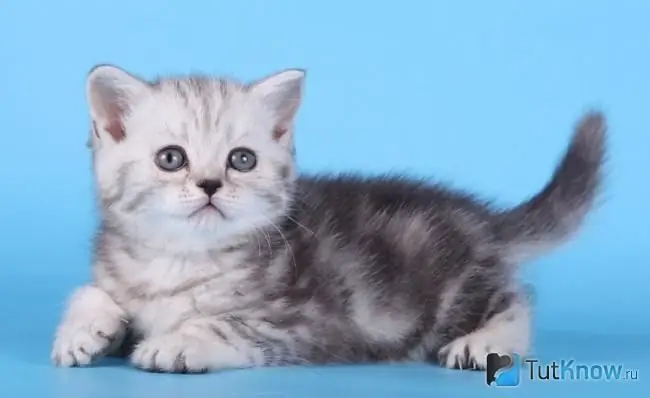
The average cost of such a fluffy lump with a full package of documents is approximately 7000-8000 rubles, kittens without documents will cost you in the range of 3000-5000 rubles. Representatives of the show class will be estimated at times more expensive.






